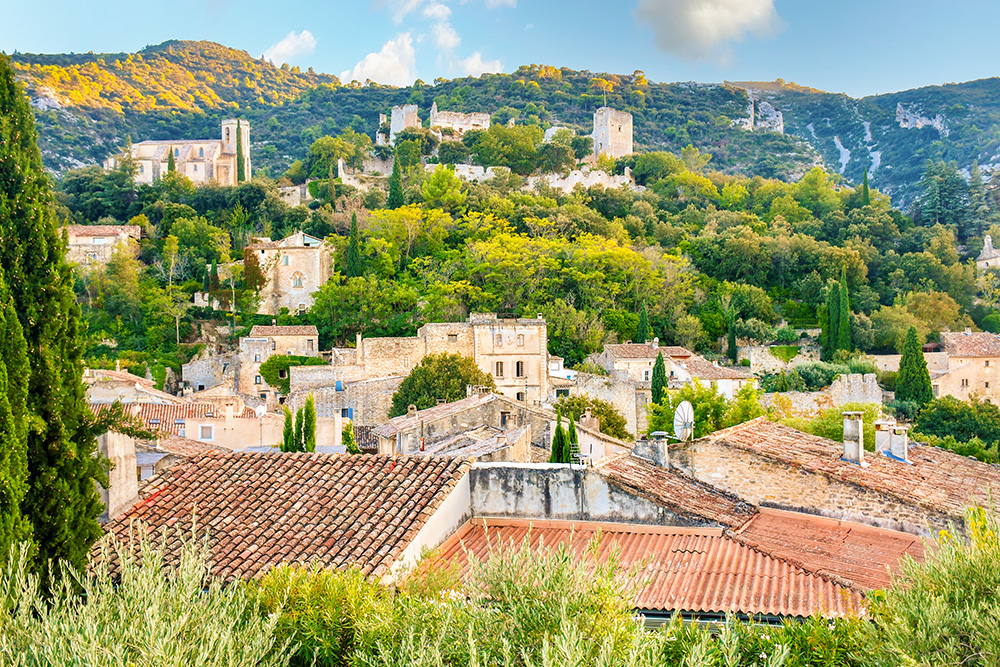As someone who has wandered the sun-drenched streets and hidden corners of Oppède-le-Vieux multiple times, each visit feels like stepping into a living painting of Provencal charm.
From the moment you set foot in this ancient village, perched majestically atop its rocky pinnacle, you're enveloped in a timeless atmosphere that whispers tales of centuries past.
I've roamed through its labyrinthine alleys, capturing its rustic beauty on camera for my latest video, yet every return feels like a new discovery.
Oppède-le-Vieux isn't just a destination; it's a journey through history, culture, and the soul of Provence.
Join me as we delve into the enchanting allure of Oppède-le-Vieux and uncover the secrets that lie within its weathered stone walls.
Watch this short video on the Luberon!
Why you should visit Oppède-le-Vieux
Oppède-le-Vieux beckons with its timeless allure, offering a glimpse into the soul of Provence that's unlike any other.
This picturesque village, with its medieval charm and stunning vistas, is a treasure trove waiting to be explored.

Oppède-le-Vieux © French Moments
Wander through its winding streets, where every weathered stone tells a story of centuries past.
Discover hidden chapels adorned with centuries-old frescoes, or simply soak in the tranquility of its sun-drenched squares.
Oppède-le-Vieux is a haven for history buffs, nature enthusiasts, and those seeking a taste of authentic Provencal life.
Whether you're captivated by its rich heritage, enchanted by its natural beauty, or simply seeking solace in its timeless ambiance, Oppède-le-Vieux promises an unforgettable experience that will leave you yearning to return again and again.
Plan your trip
- 🛏 Find the best accommodations in the Luberon on Booking.com
- 🚙 Rent a car in Avignon or Marseille-Provence Airport
- 🙋♀️ Get the PASS CÔTE D'AZUR and take your pick from more than 100 amazing experiences!
- 🤩 Visit the beautiful Provençal region of Luberon
- 🚐 Join a 6-hour tour of Lourmarin, Bonnieux, Roussillon, and Gordes by air-conditioned minibus
- 🚘 Discover Provence in a 2CV. Stroll along exceptional roads and enjoy a piece of Luberon all to yourself!
- 🥗 Experience a black truffle hunting tour in a Luberon plantation
- 📚 Read the DK Eyewitness Provence and the Côte d’Azur Travel Guide
- 🗺 Download the touristic map of Lourmarin
- 🚻 Public toilets are located at "Traverse du Clos" near Place Henri Barthelemy.
- 🚗 Park at the entrance to the old medieval centre: Avenue Philippe de Girard (coming from Bonnieux), 20 Rue du Grand Pré (Parking Petitou) or by the castle.
The Fascinating History of Oppède
It's likely that the name Oppède comes from "oppidum".
The Romans left behind a number of relics, including mosaics, coins, vases, and an altar to the god Mercury displayed in the museum of Cavaillon.
However, the village's history stood out in the Middle Ages when Oppède became the property of the Pope in 1274.
Oppède in the 16th century
In 1501, Pope Alexander VI granted the lordship of Oppède to the Avignon family of Maynier.
Jean de Maynier, President of the Parliament of Aix, infamously distinguished himself in the War of the Waldensians.
He enforced the royal decree and organised the massacre of over 3,000 Waldensians in 1545.
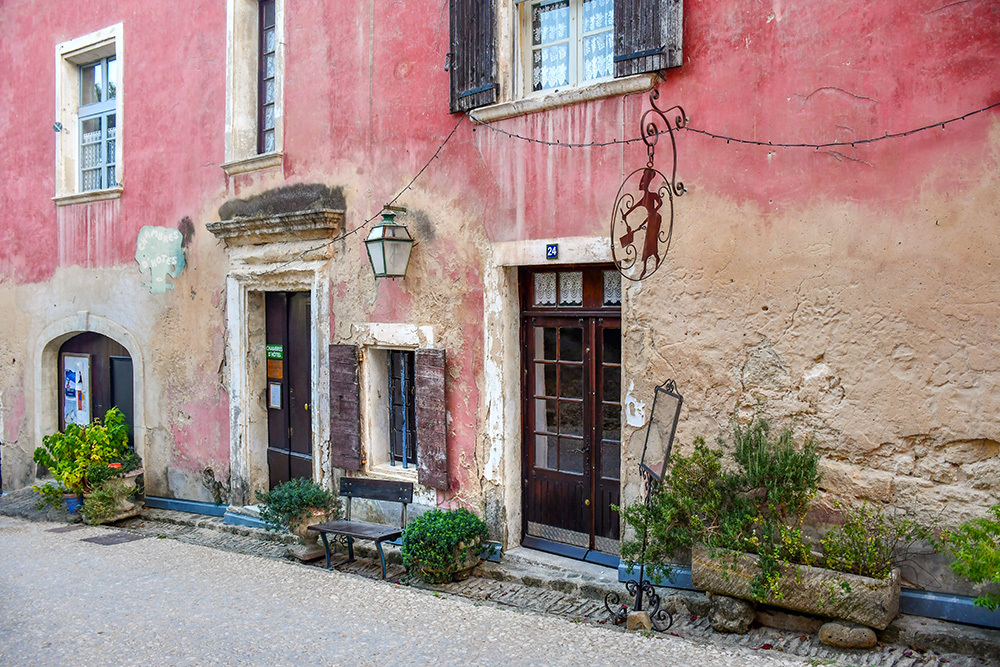
Rue de la Ferraille © French Moments
The abandonment of Oppède-le-Vieux
Throughout the 19th century, the old village slowly emptied of its inhabitants.
Villagers found it more practical to be near their fertile lands in the plain than to be clinging to their windy rock, constantly descending, even just to fetch water from the fountain.
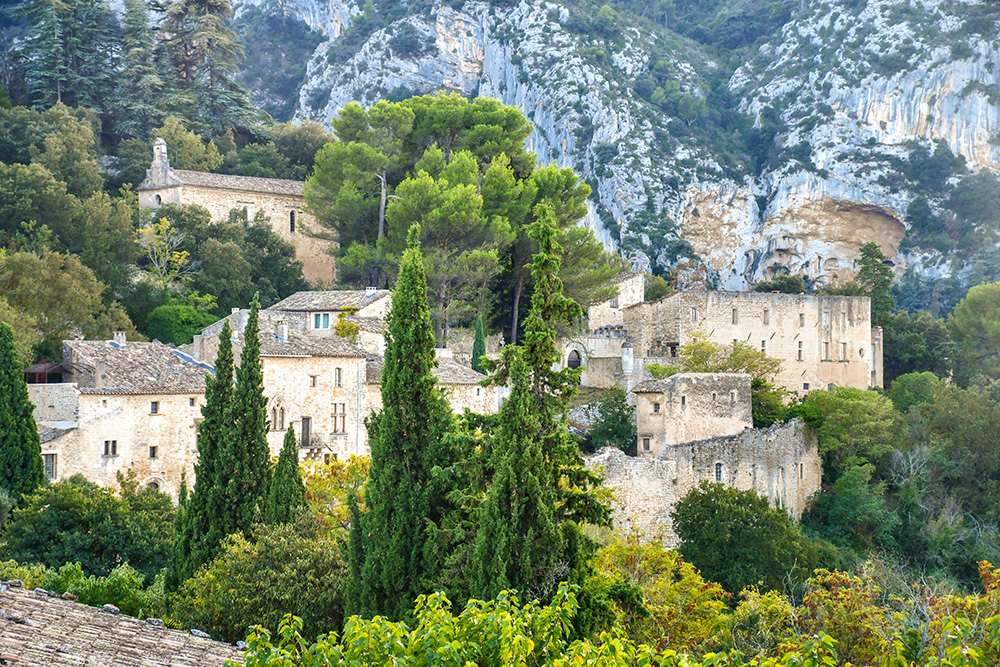
Oppède-le-Vieux © French Moments
Thus, a new village was born in the early 20th century in the hamlet of Les Poulivets.
The villagers transferred the school there in 1908, then the town hall, post office, and shops.
The baker's oven in the old village went out in 1909.
The Catholic priest hardly had any parishioners left for the masses in his church, which was situated so high on the hill that a new church was built in the nearby plain.
Today, the new village is a welcoming space lined with plane trees, cafés, and restaurants.
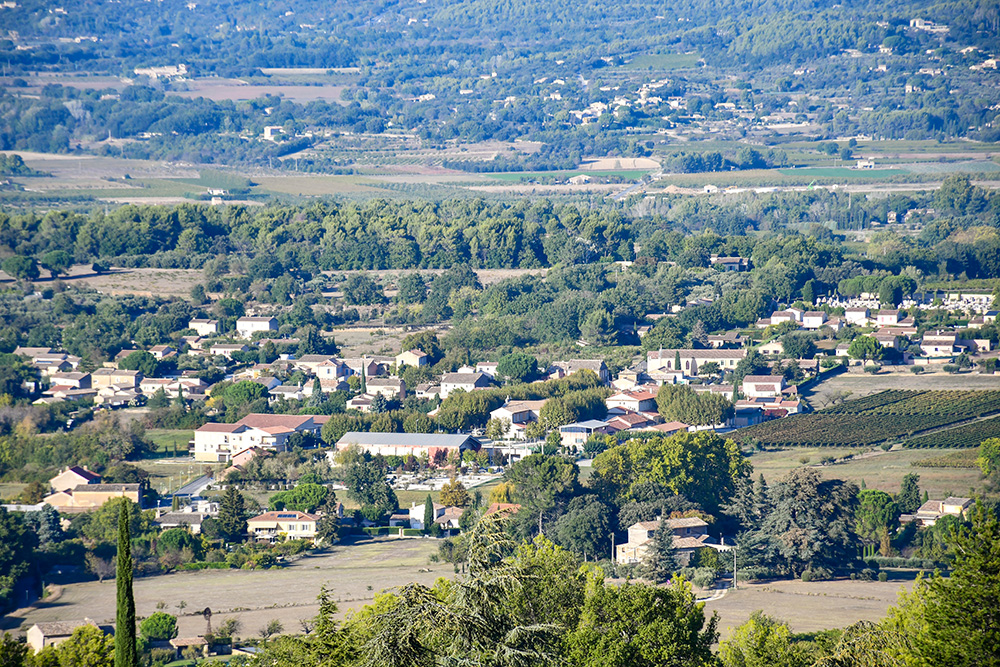
Les Poulivets © French Moments
Thus, at the dawn of the First World War, Oppède-le-Vieux became a ghost village.
The revival of Oppède-le-Vieux
Things began to change during World War II when a group of young artists and architects took refuge in the ruined old village.
Consuelo de Saint-Exupéry, the wife of Antoine de Saint-Exupéry, briefly shared the group's life.
When Consuelo left in 1942 to join her husband in the United States, she swore to her friends to tell the story of the Oppède group.
In 1947, she recalled the village in her book "Oppède":
“Des murailles immenses, des tours décapitées… les lumières du couchant éclatant sur les parois percées des fenêtres en ogive”.
"Immense walls, decapitated towers... the sunset lights shining on the walls pierced with ogival windows".
But the true rebirth of the village came in the 1960s with the arrival of second-home residents.
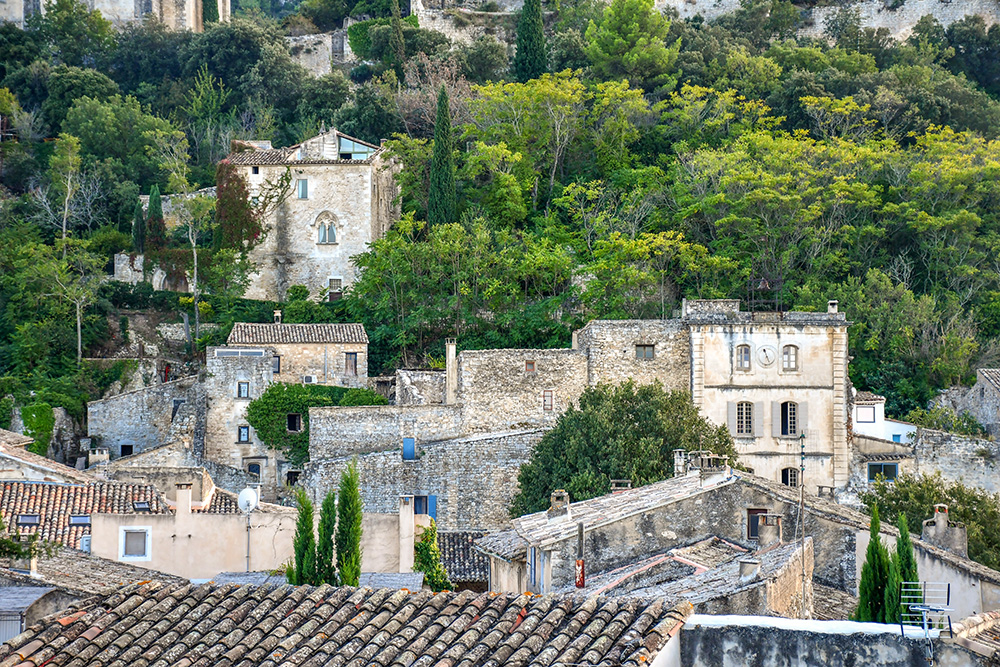
Oppède-le-Vieux © French Moments
Discover Oppède-le-Vieux
Here's some tourist information to help you explore the Provencal village.
🎦 Check out my guided walk on YouTube to explore Oppède-le-Vieux with me:
Our discovery walk begins at the visitors' car park, and we'll take a path through the forest to get to the old village.
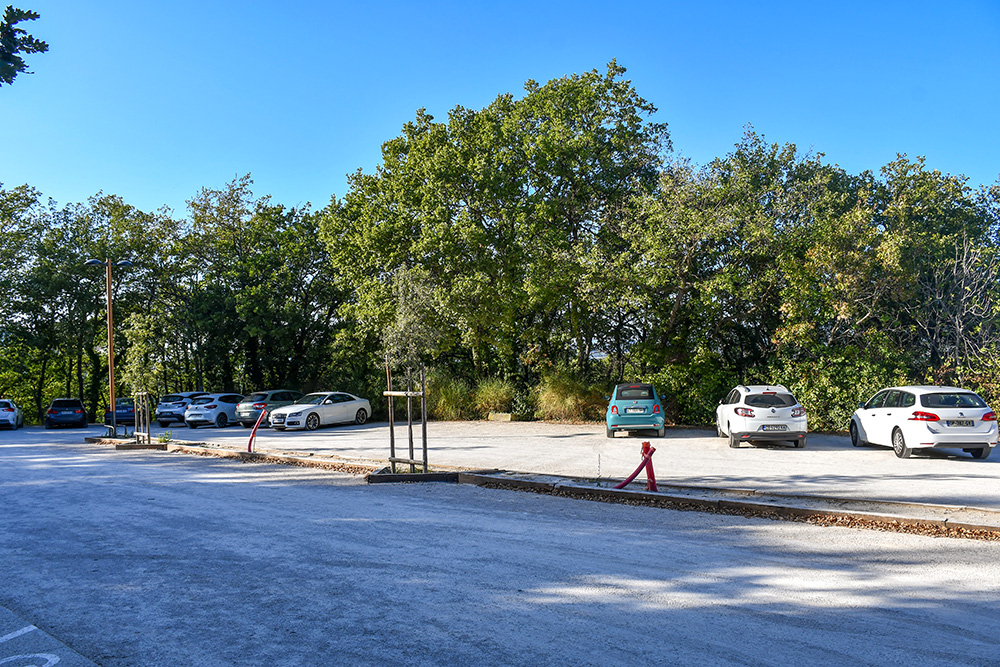
The visitor's car park © French Moments
We'll then climb to the top, where the church and castle are perched, before descending to the Place de la Croix via the old village streets.
Terrasses Sainte-Cécile
To reach the village from the car park, you will walk through a botanical garden known as the Terrasses Sainte-Cécile.
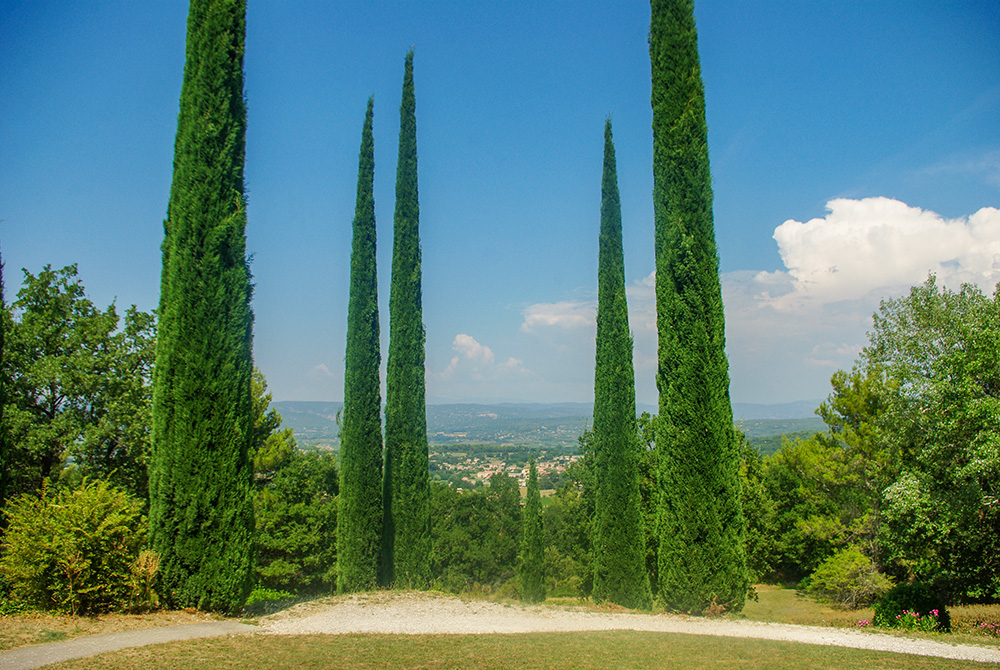
Terrasses Sainte-Cécile © French Moments
This place used to be used for agriculture.
These old terraces were overgrown when they were acquired by the municipality in 1986.
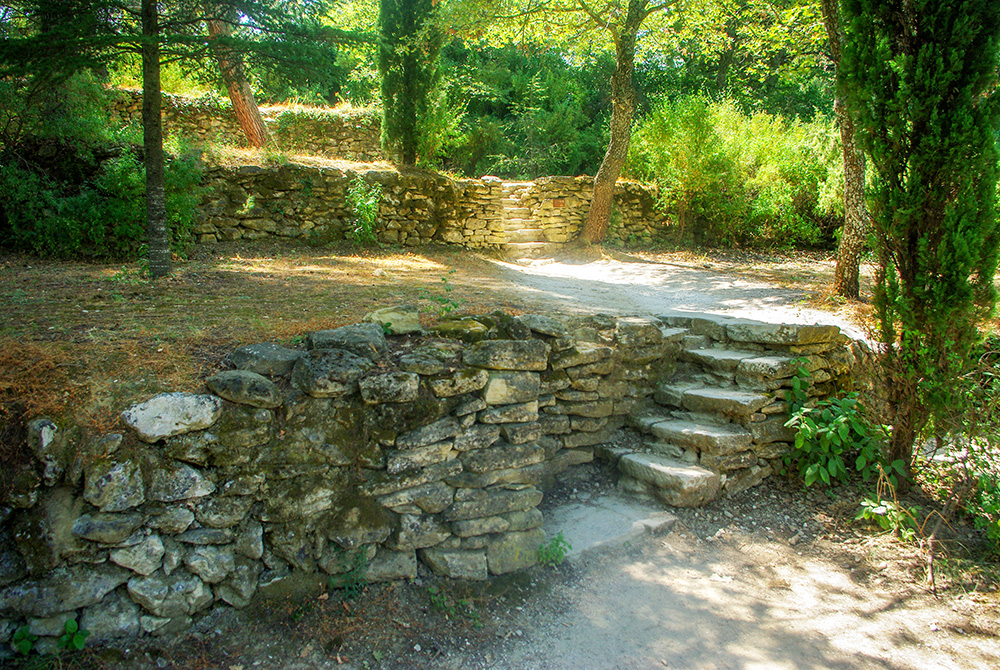
The former restanques © French Moments
After renovation work started in 1991, the new natural space was inaugurated two years later.
The botanical garden allows you to discover the garrigue, a dry vegetation adapted to the Mediterranean climate.
You can see over 80 species characteristic of this natural environment: plants, flowers, shrubs, and typical fruit trees of the Luberon, like the parasol pine, the green oak, the juniper, the cypress, the olive tree, thyme, and rosemary.
The elevated position of the terraces offers a commanding view of the surrounding region, especially the Calavon plain and the foothills of the Monts de Vaucluse to the north.
Aire de Battage
Before entering the old village, find your way to a not-to-miss spot.
It's the “Aire de battage”.
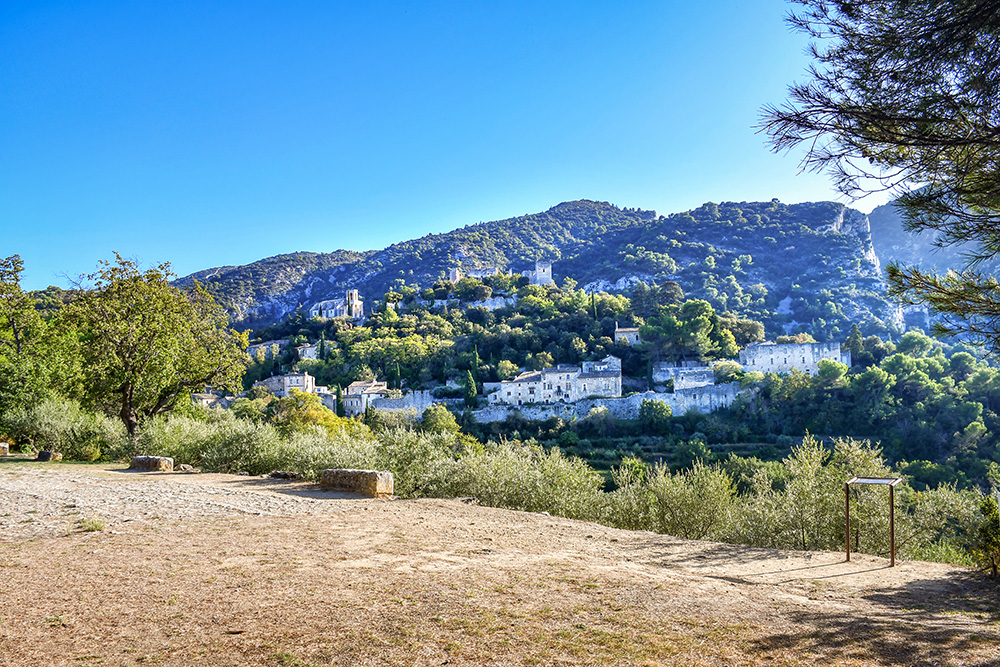
Aire de Battage © French Moments
This is a platform paved in calade (meaning cobbled) since the 16th century.
Its exposure to the wind helped facilitate the threshing and drying of wheat.
What's most striking here is the view of the village of Oppède-le-Vieux.
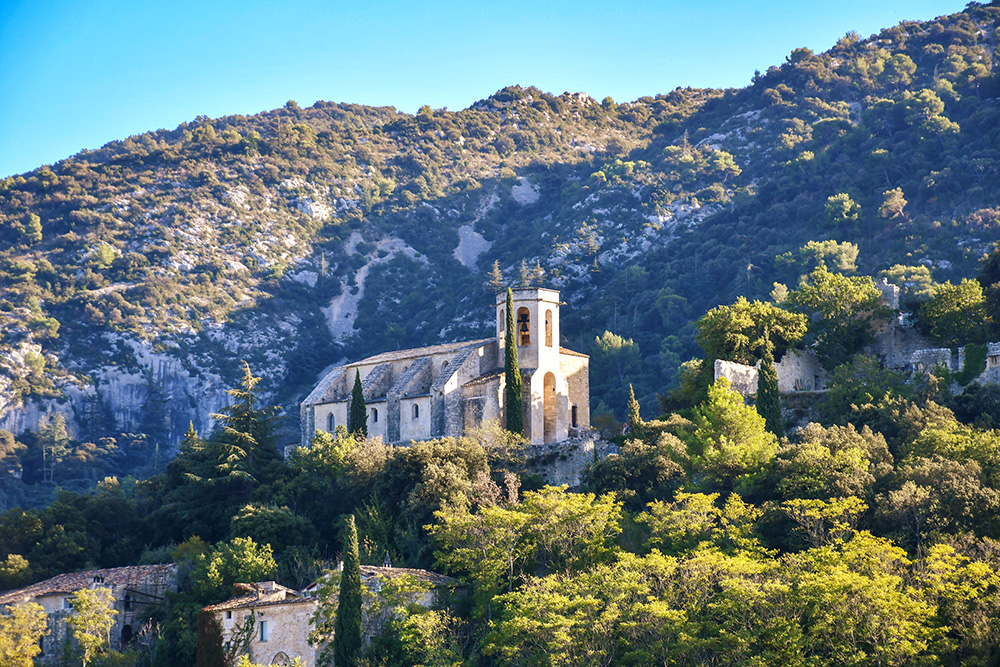
Notre Dame d'Alidon, a view from the Aire de Battage © French Moments
You realise how unique this site is.
The houses are built on a rocky spur in a rugged setting of forests, ravines, and rocks.
At the very top stand the Notre-Dame d'Alidon church and the castle ruins.
Let's backtrack a bit to head towards the village.
Rue Sainte-Cécile
Rue Sainte-Cécile is a narrow street that offers a magnificent view of the church at the top of the village.
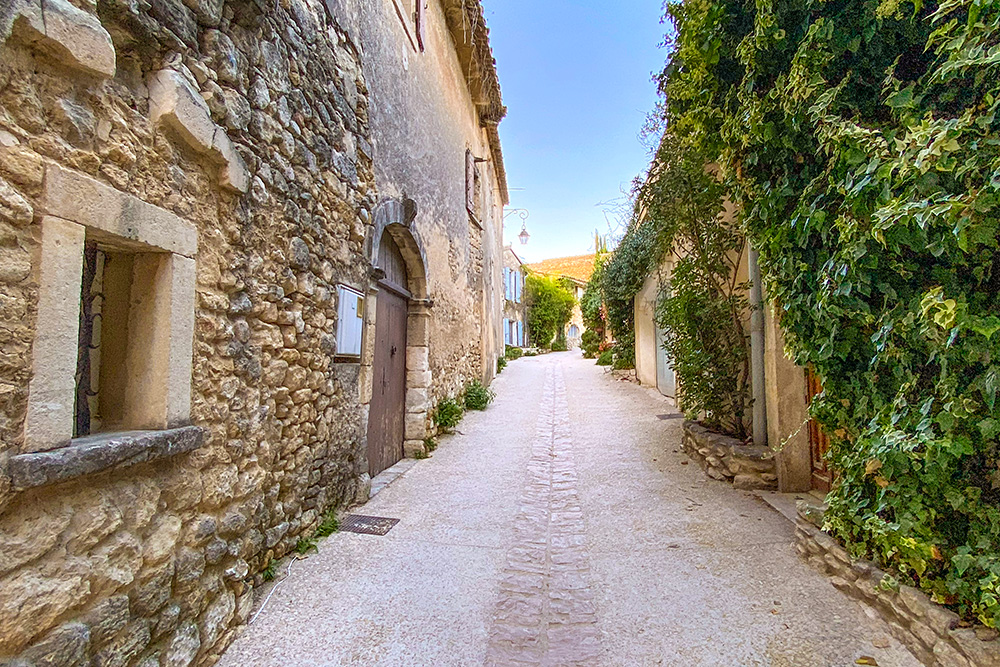
Rue Sainte Cécile © French Moments
Follow it to the centre of the old village, where the Place de la Croix is located.
Place de la Croix
Place de la Croix is the heart of old Oppède, with the village's only restaurants and cafés.
It's also the starting point for many trails that crisscross the local countryside.
The square owes its name to the mission cross, erected in 1759 by the Capuchins of Cavaillon.
The south side is bordered by a row of houses nestled in the ancient city walls.
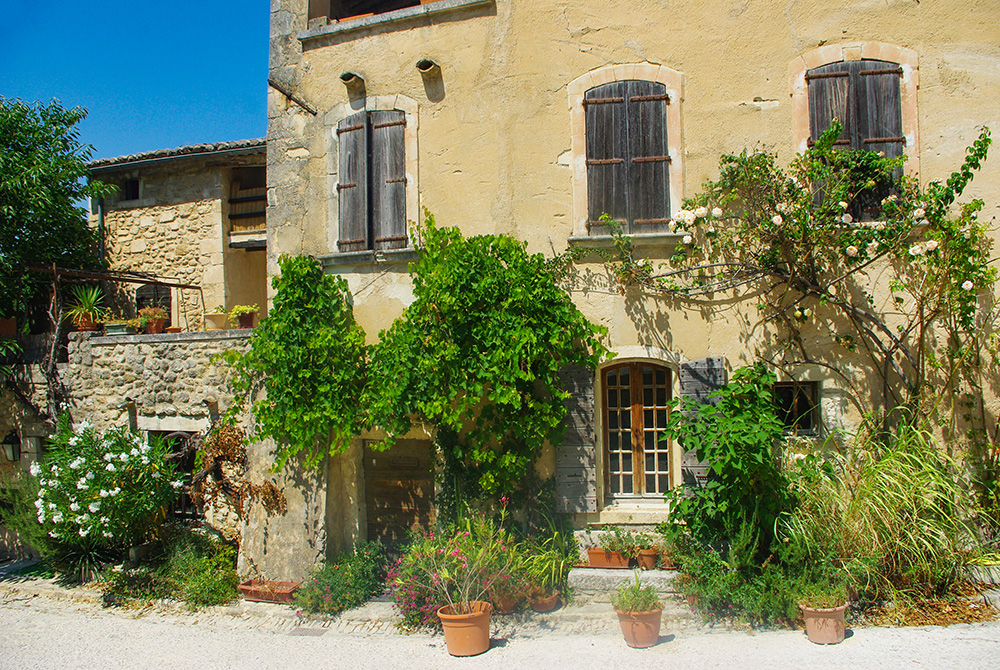
Oppède-le-Vieux © French Moments
The belfry
In the midst of this setting, you can see a large building topped with a small wrought iron bell tower from 1758.
This fortified gate is the former Town Hall, built in the 18th century.
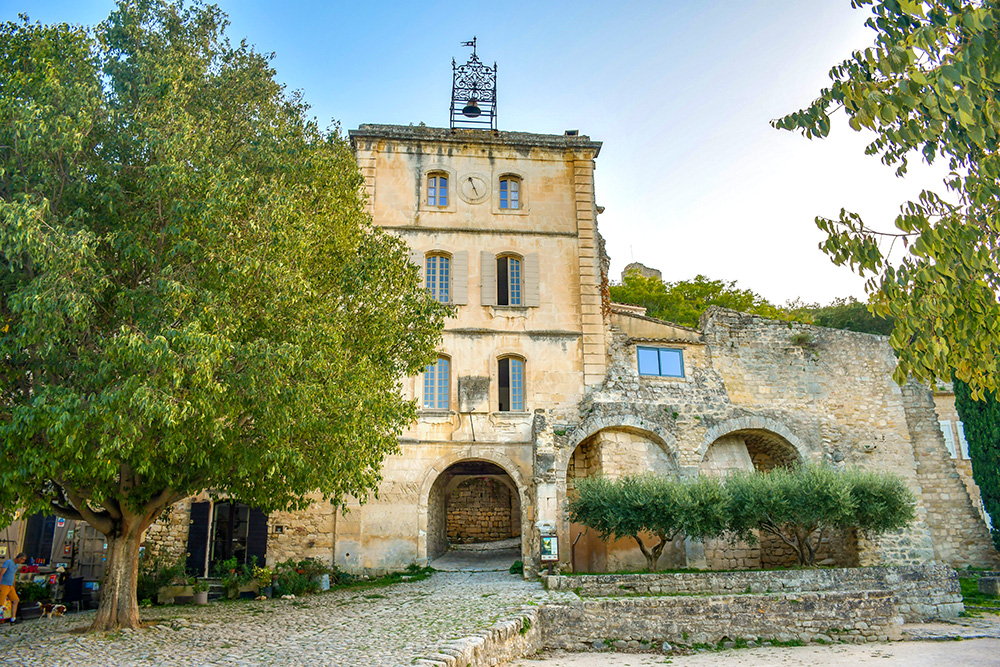
Place de la Croix © French Moments
Saint Joseph Chapel
See the two arches to the right of the belfry?
Those are remnants of the Saint Joseph chapel, built in 1644.
The chapel was constructed to allow elderly or disabled individuals to attend religious services as they couldn't climb to the church at the top of the village.
Rue des Pénitents
Let's pass under the porch and then take the Rue du Chapitre to the right.
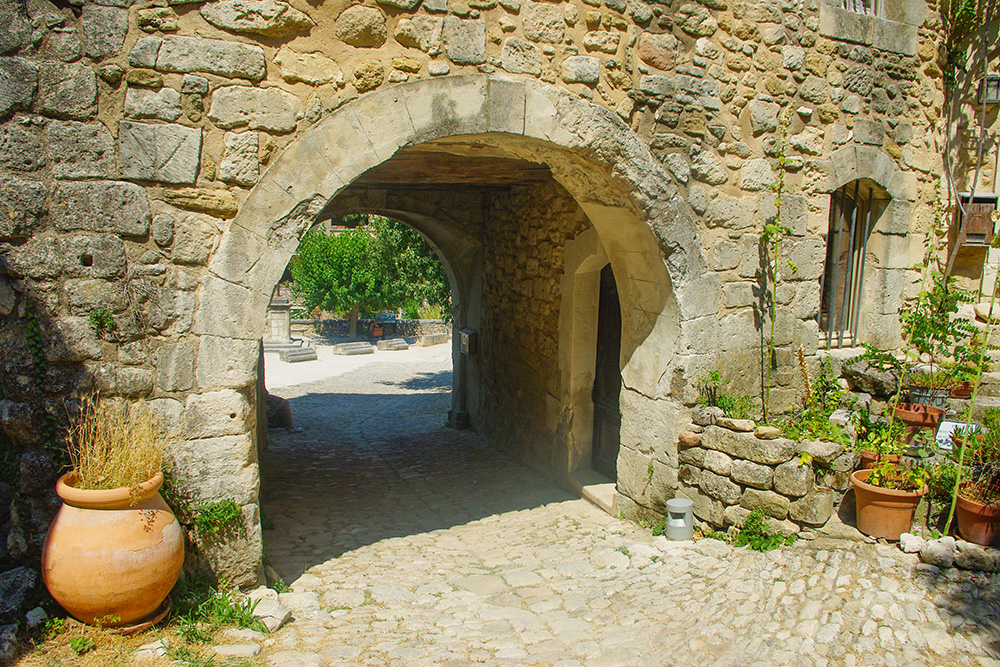
The porch of the belfry © French Moments
Once past the belfry, the walk continues on the calades.
These are cobblestone streets smoothed by centuries and the steps of wanderers.
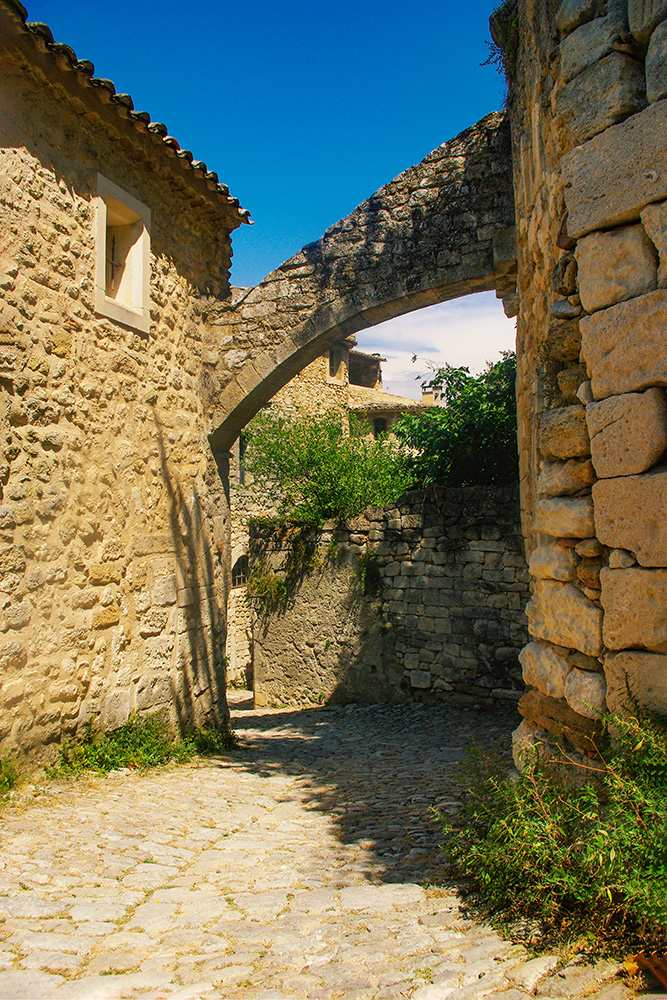
Rue du Chapitre © French Moments
At the next intersection, turn right to follow the Rue des Pénitents.
This path will gently lead you to the chapel of the White Penitents.
Wandering through the maze of paved calades in the old village reveals a unique Provençal village.
White Penitents Chapel
The chapel of the White Penitents dates back to 1680.
Inside, there are mural frescoes from the 18th century.
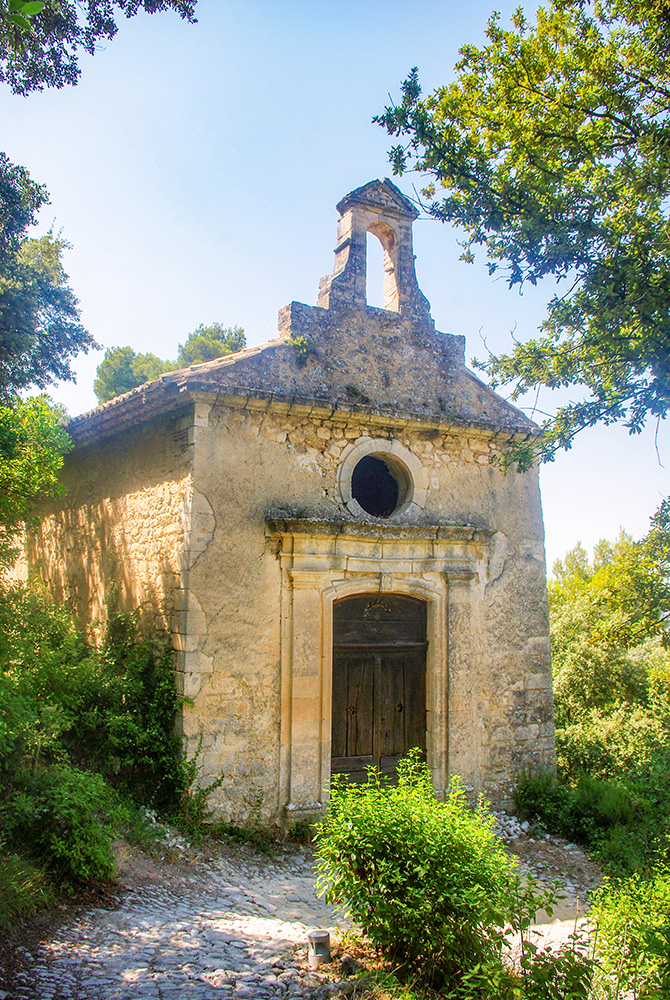
Summer © French Moments

Autumn © French Moments
Rue de l'Église
Continue uphill via the Rue de l'Église, which, as its name suggests, leads us to the church.
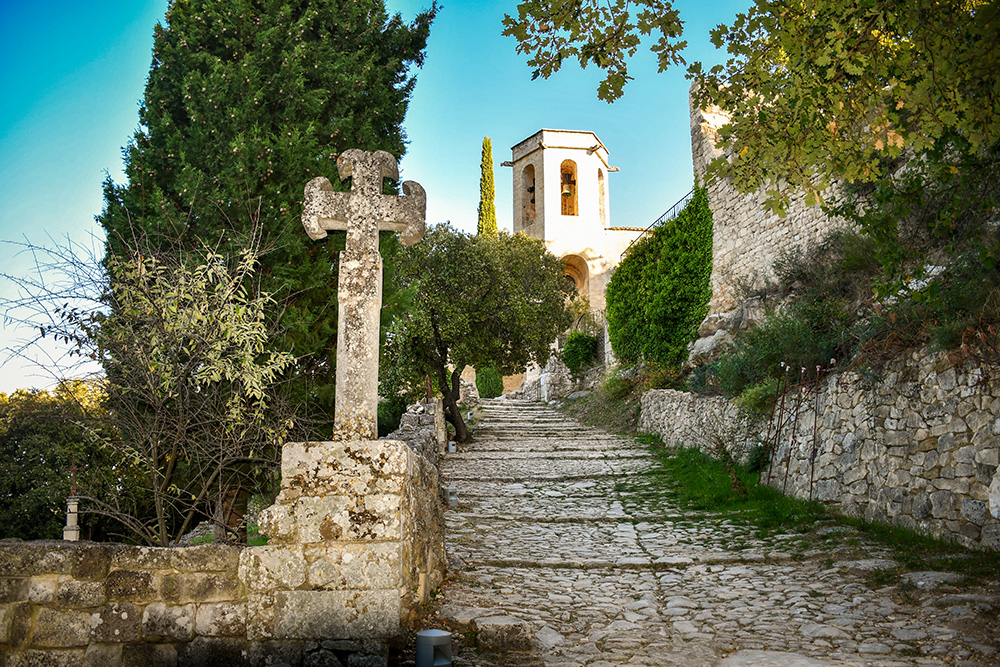
Rue de l'Église © French Moments
Towards the top, you'll see the 18th-century cross. Actually, the original was stolen, and this is a copy.
Viewpoint
You've now reached the highest point of the village.
Admire the view from the viewpoint with its orientation table.
The view stretches over the rooftops of the old village below, the plain, and the Monts de Vaucluse.
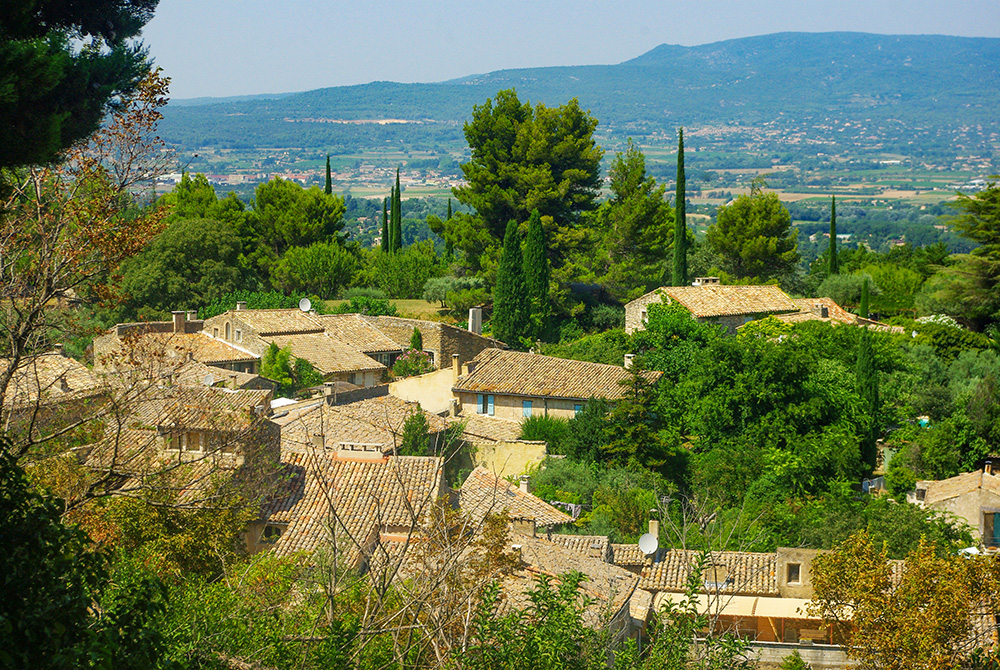
Oppède-le-Vieux from the viewpoint © French Moments
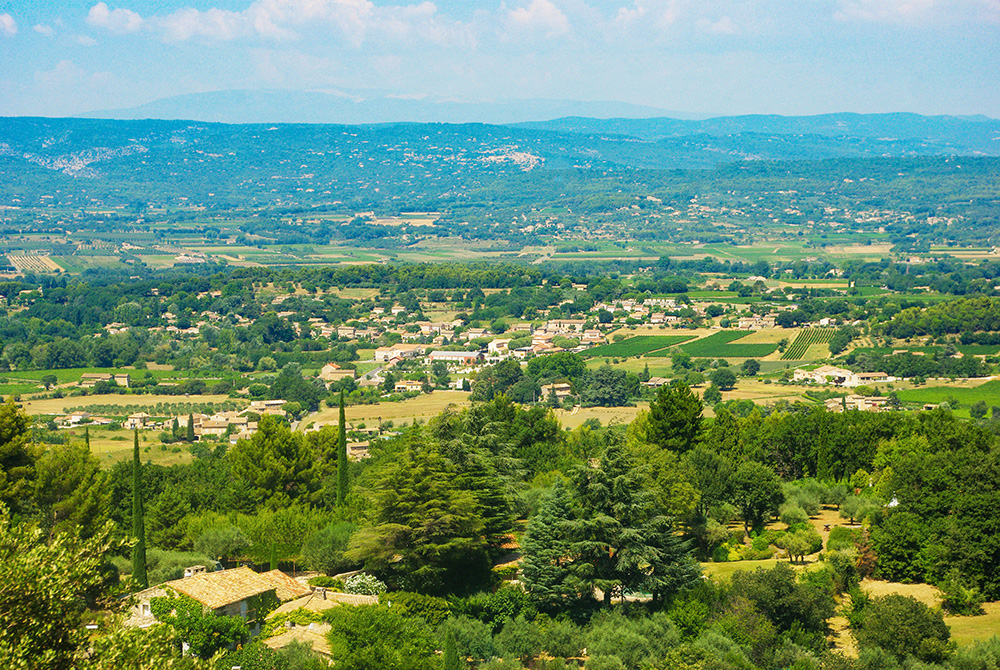
From the viewpoint © French Moments
In the distance, you can glimpse the following sites in the Luberon:
the perched village of Gordes:
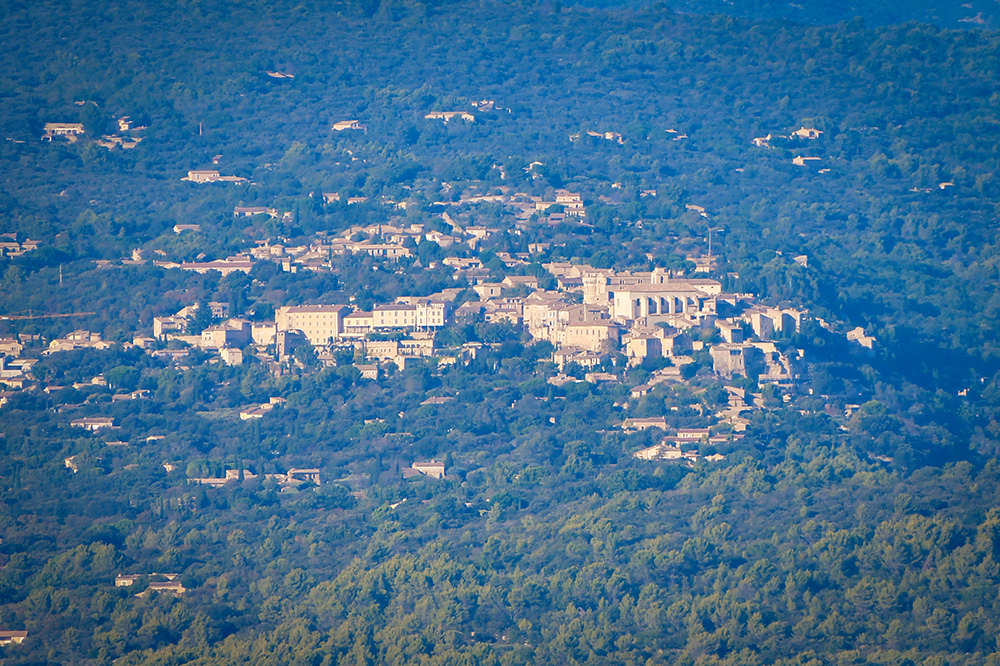
View of Gordes from Oppède © French Moments
the village of Roussillon:
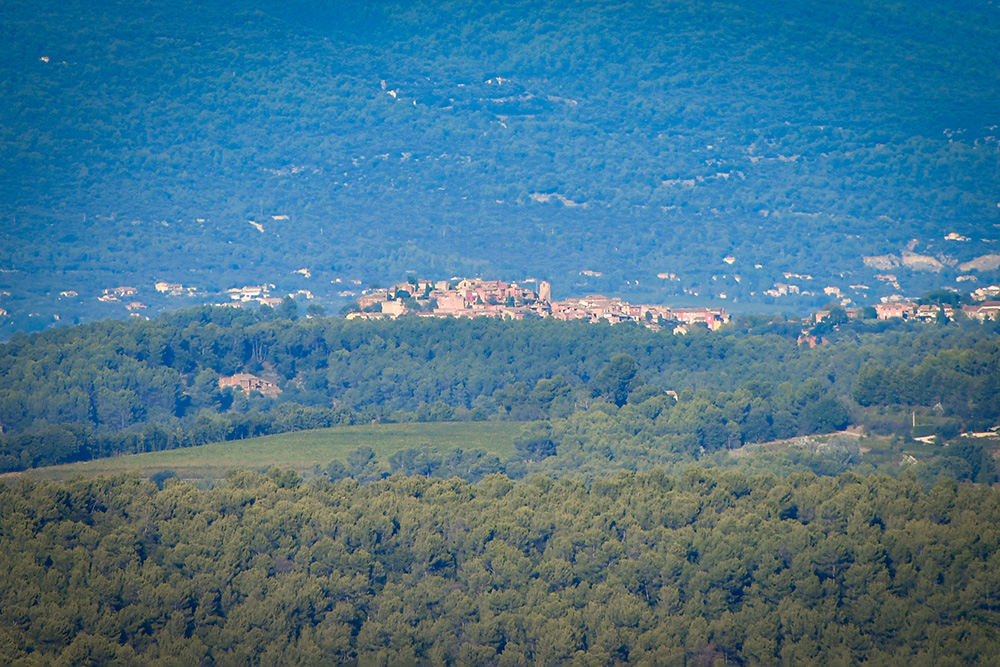
View of Roussillon from Oppède © French Moments
the citadel of Ménerbes:
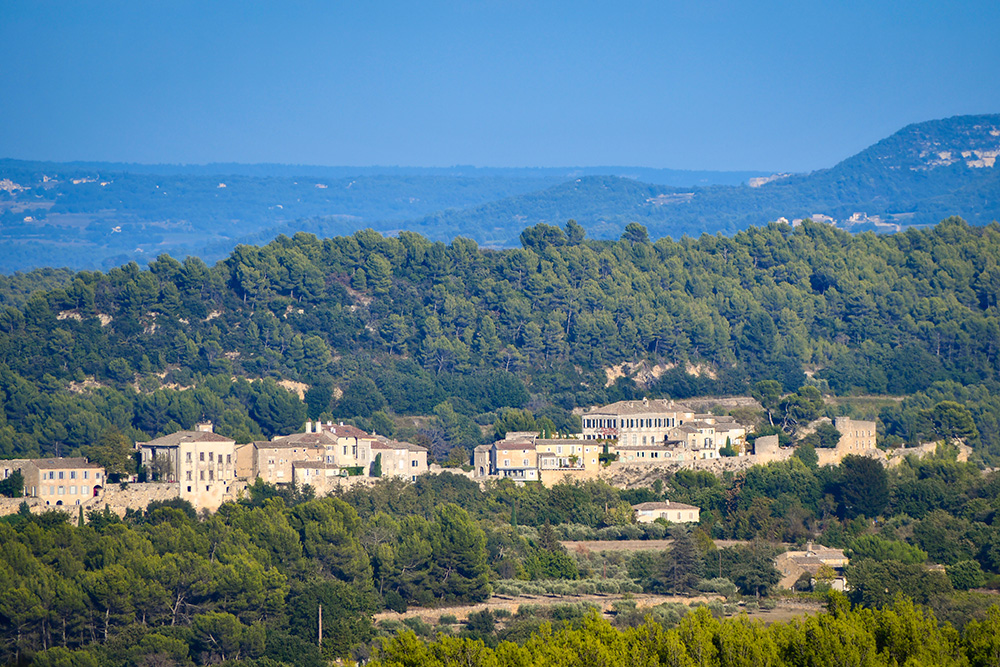
View of Ménerbes from Oppède © French Moments
and the famous Mont Ventoux, closing the horizon to the north.

View of Mont Ventoux and Gordes from Oppède © French Moments
Church of Notre Dame d'Alidon
Turn around to admire the collegiate church.
The church is named “Église Notre-Dame d'Alidon".
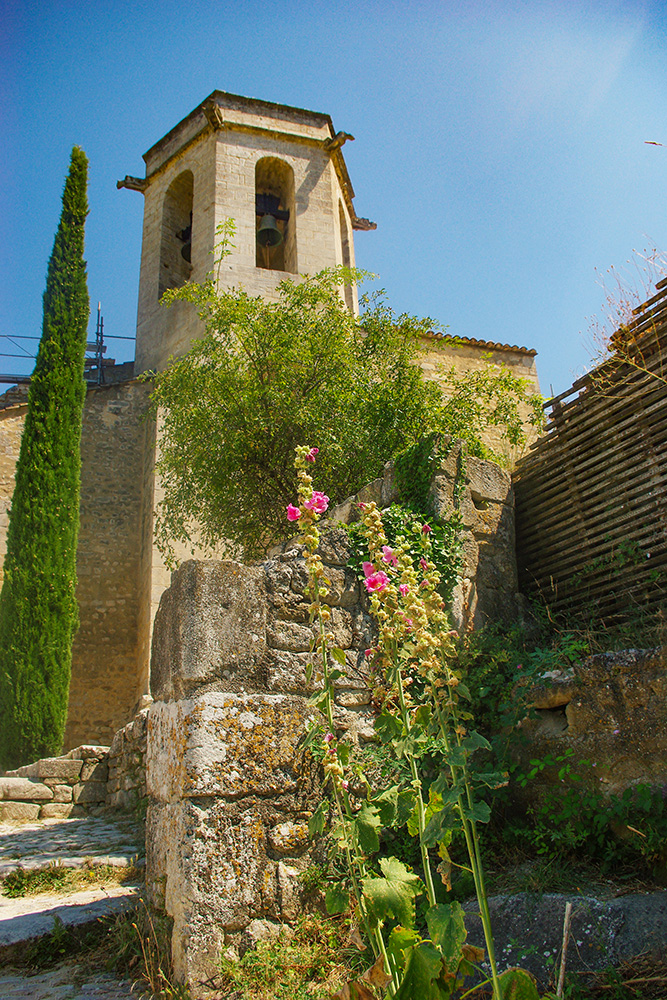
Notre-Dame d'Alidon © French Moments
It's a curious name that could come from three words: "doloris" for pain, the Gaulish word "dunum" meaning hill, or "dominus" for lord.
The church dates back to the early 16th century and was renovated in the 19th century.
It has a defensive appearance with its buttresses.
The hexagonal bell tower is unique in Provence and was built in 1500.
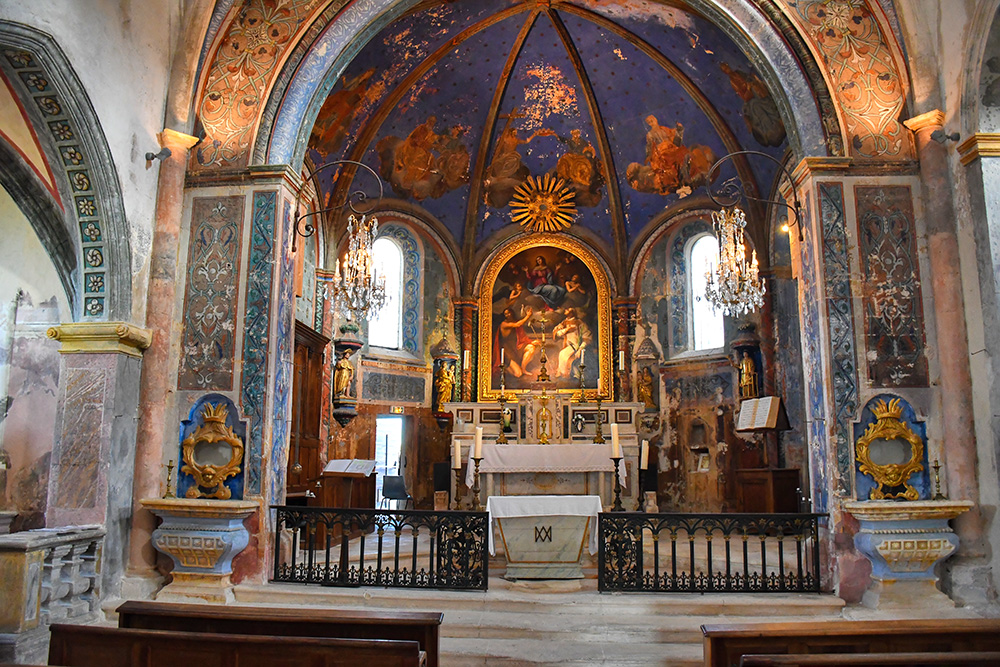
Inside the church © French Moments
Castle
The castle was built in the 13th century and expanded in the 14th century.
It had been uninhabited for over a century when an earthquake in 1731 completely destroyed the castle.
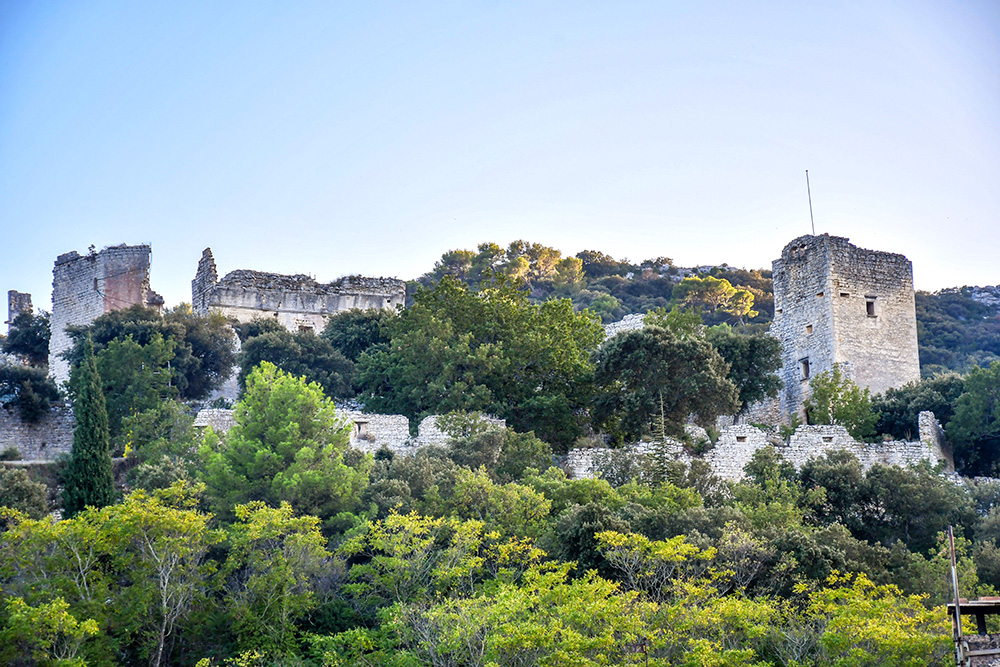
The castle © French Moments
Until the early 19th century, it served as a stone quarry.
The site is being restored by enthusiasts of old stones who continue to clear the ruins of invasive vegetation to secure the area for future visitors.
For now, access to the castle isn't possible, but we hope it will be again in the coming years.
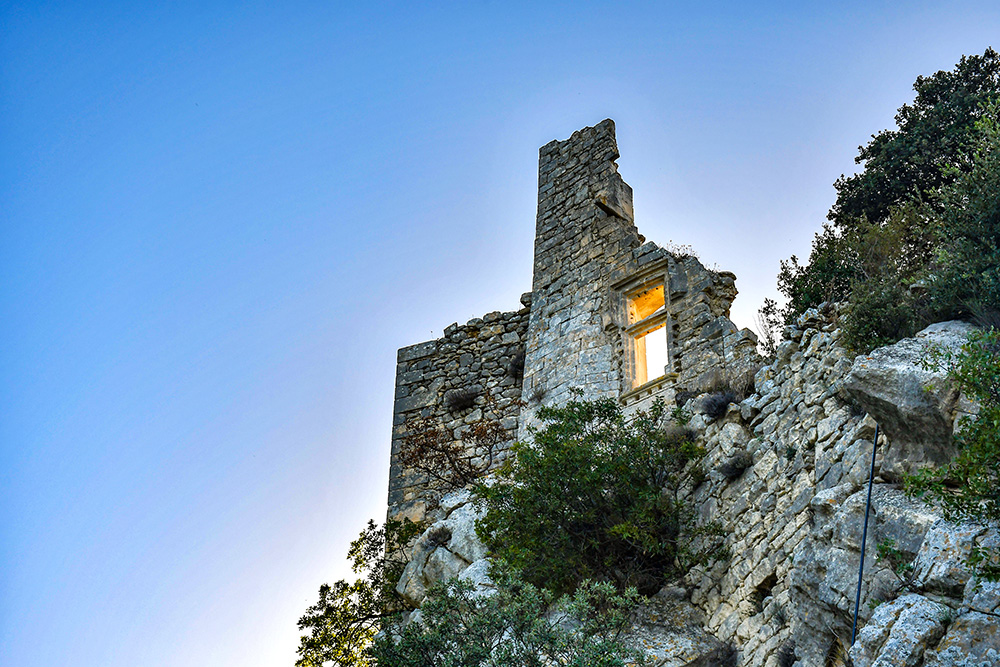
The castle © French Moments
Rue du Chapitre
Head back down to the viewpoint and get ready for the descent.
To do so, take the Rue du Chapitre. You'll weave your way through an extraordinary chaos of collapsed houses, old walls, and empty windows.
You'll catch glimpses of remnants of dwellings and barns, more or less crumbled and overrun by ivy, bearing witness to the abandonment of the place.
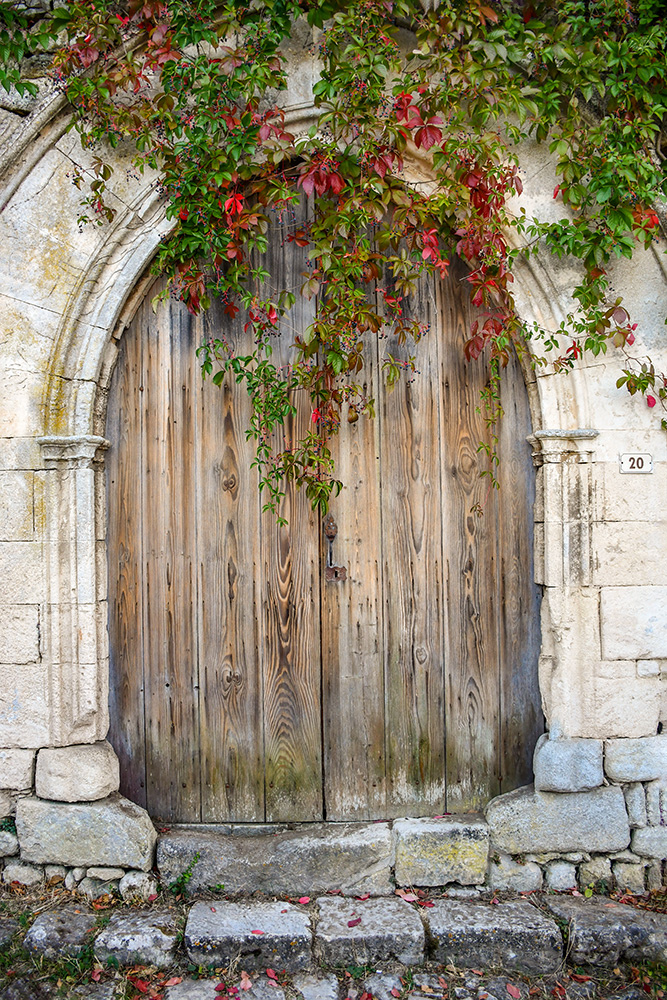
Rue du Chapitre © French Moments
If you look at the porches, you'll see dates engraved, such as 1721 or 1775.
They reveal that these ruins, which one might easily think date back to the destruction of the Wars of Religions in the 16th century, were actually inhabited houses in the 18th century.
They show how quickly nature reclaims its rights.
You'll also discover some tastefully restored houses.
Their owners didn't hesitate to add Gothic twin windows or Renaissance-style mullioned windows.
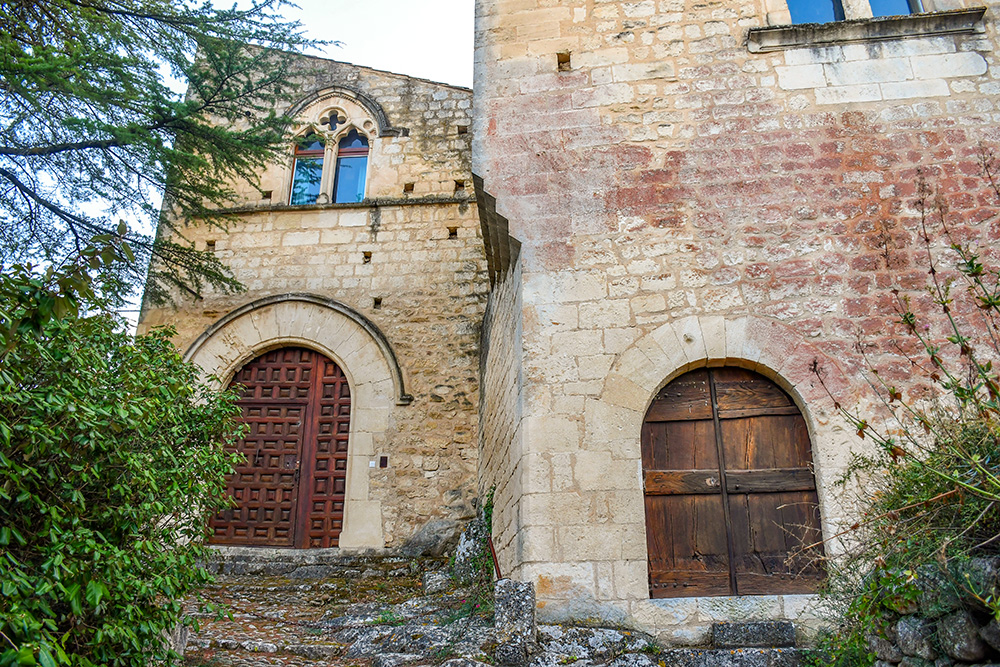
Rue du Chapitre © French Moments
Finally, you'll glimpse old shops that still retain their beautiful vaulted archways.
The calades of Oppède-le-Vieux
The Rue du Chapitre is the most interesting of Oppède’s calade streets.
The calades are part of the village's history.
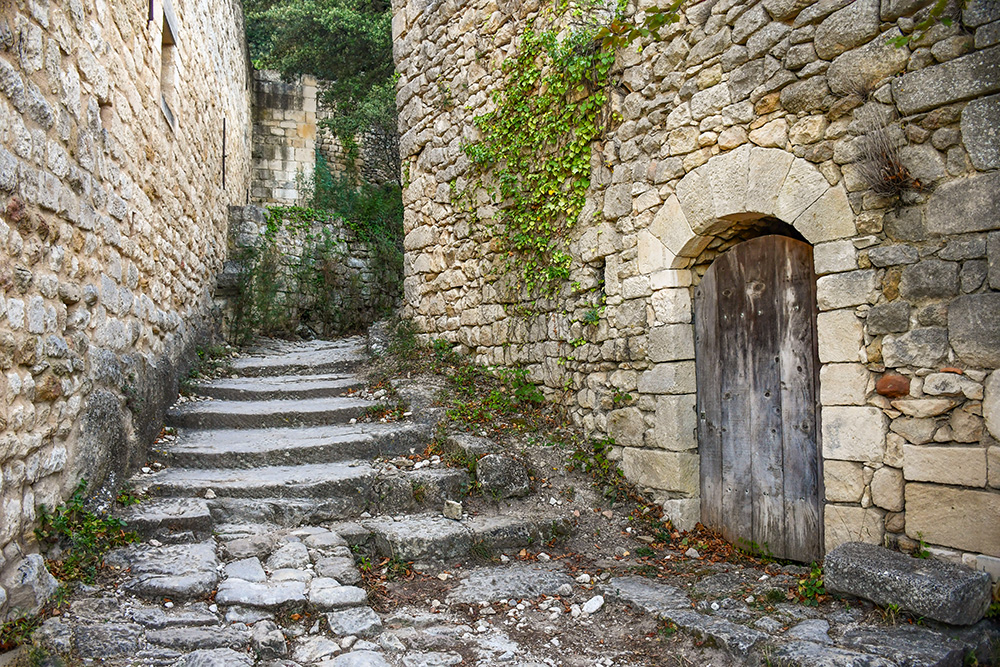
The calade of Rue du Chapitre © French Moments
These stone-paved paths had to bear heavy carts.
The calades were regularly maintained with the help of villagers who lent animals and carts to transport stones and earth.
But over time, the deterioration and wear of the calades posed a danger to walkers, especially in rainy weather.
That's why the municipality decided to restore them while preserving their original layout and character.
Restoration work was carried out on these calades in the early 2010s, allowing us to access the church under good conditions.
Rue de l'Hôpital
When reaching the bottom of the street, to the left is the belfry porch, leading you back to the Place de la Croix.
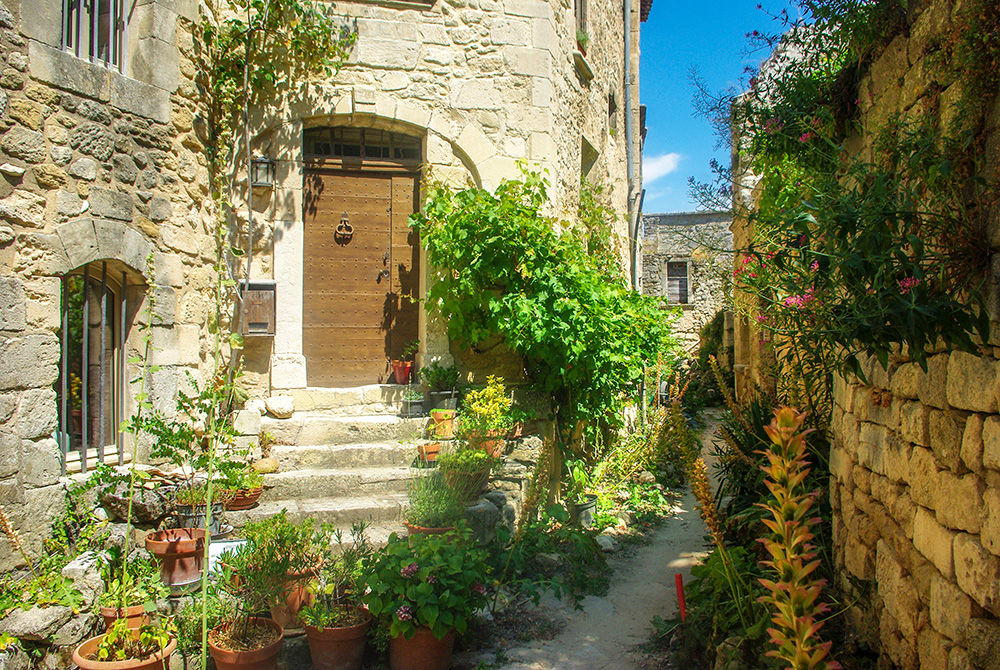
Rue de l'Hôpital © French Moments
Continue straight ahead, taking the narrow Rue de l'Hôpital.
The street leads to the old Hôtel-Dieu, the village hospital, which is now privately owned.
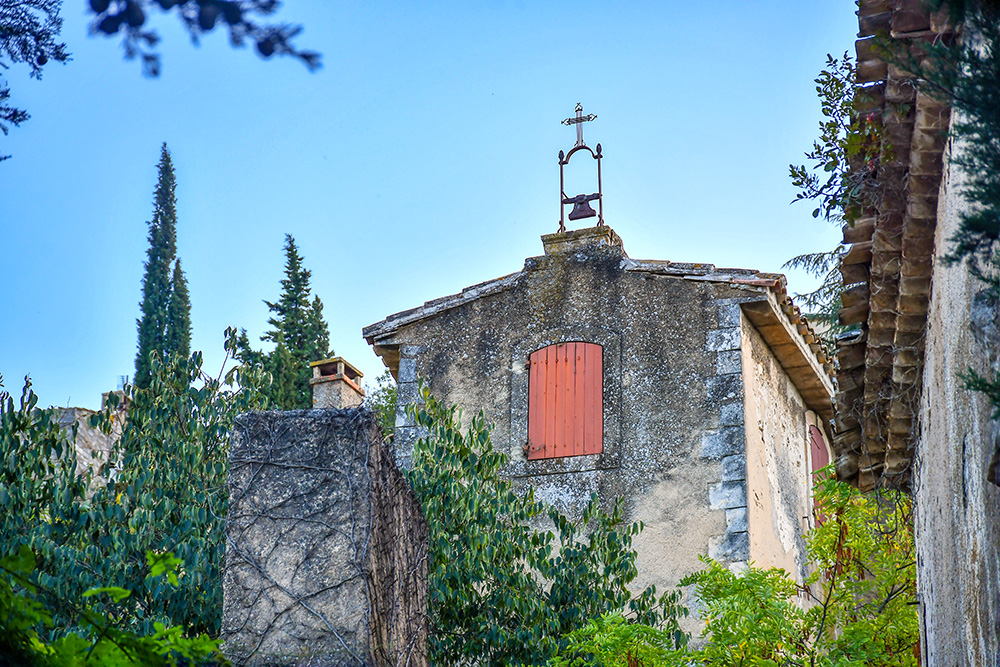
The old Hôtel-Dieu © French Moments
Rue des Écoles
The Rue des Écoles is a very picturesque street in Oppède, and this is where the two village schools were located: the boys' school and the girls' school. The school was transferred in 1908 to the new village in the plain.
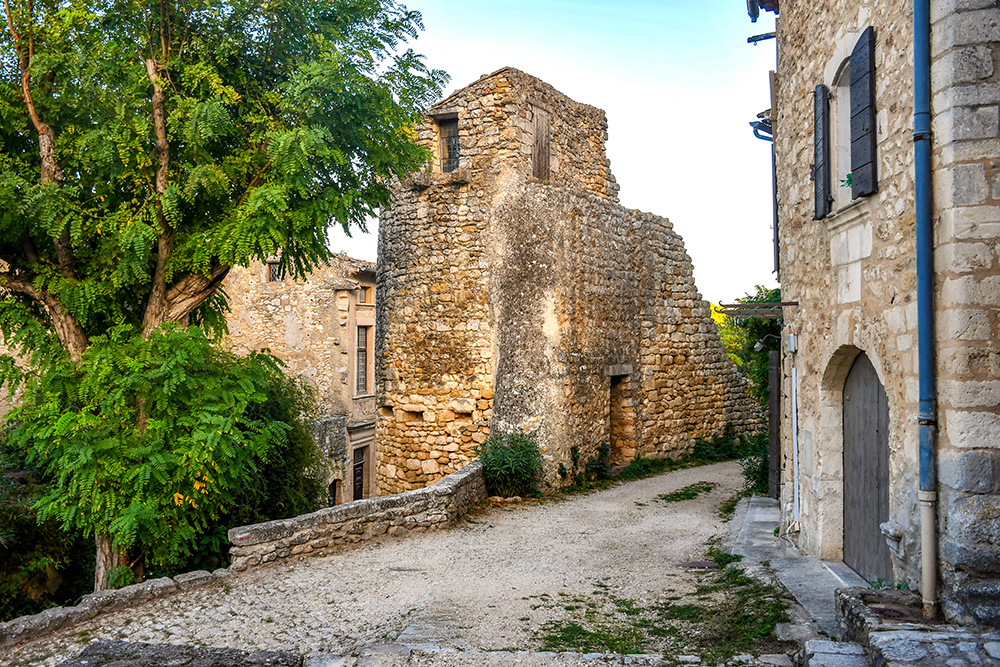
Rue des Ecoles © French Moments
Market Hall
To the left, the communal market hall was built against the rampart in 1772.
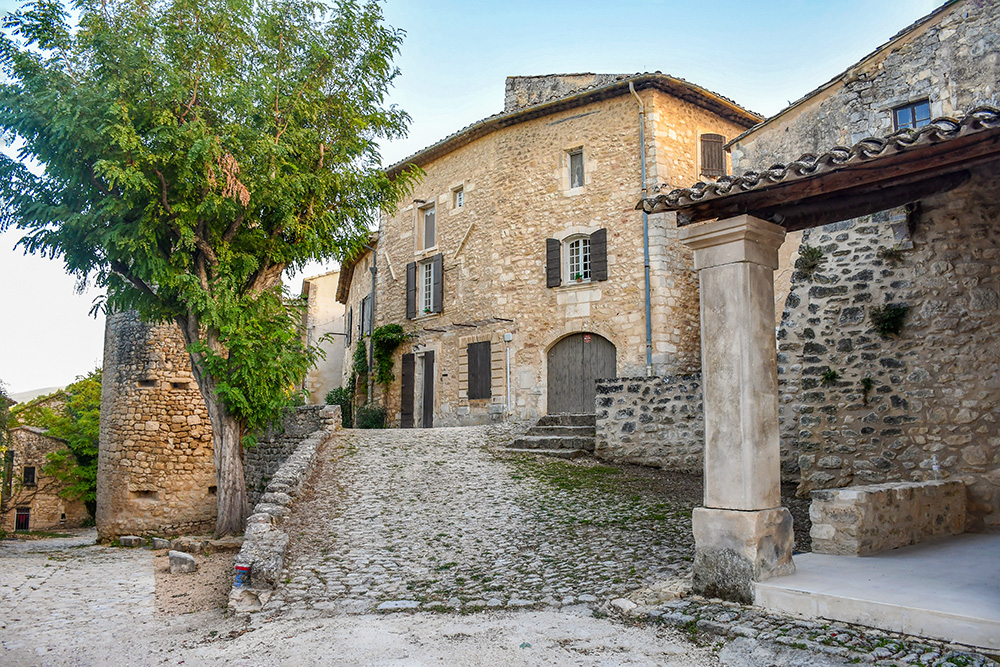
Rue des Ecoles and part of the market hall © French Moments
Originally, it had nine pillars, but only seven remain today.
The hall hosted the village's four annual fairs.
Rue de la Ferraille
At the end of the Rue de l'École, you'll reach the Rue de la Ferraille.
The town house at the corner of the two streets is the former Hôtel Roland, dating back to the first half of the 17th century.
In the corner of the adjoining house, a beautiful niche in the wall houses a recent statue of St. Peter.
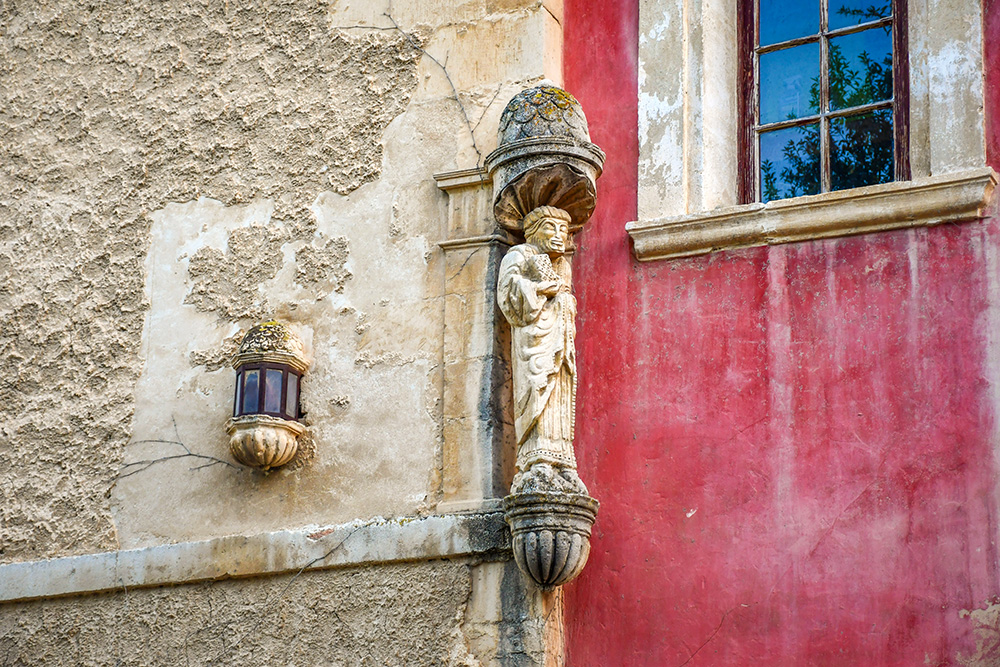
Hôtel Roland © French Moments
The houses on the north side of the Rue de la Ferraille add a lot of character to the place.

Rue de la Ferraille © French Moments
At the end of the street, you are back in the Place de la Croix at the end of our visit to Oppède-le-Vieux. Retrace your steps through the Rue Sainte-Cécile and the Terraces to walk back to the car park.
Find out more
Here are some pages from our blog and other websites to find out more about this Provencal destination.
- Discover the hilltop villages of the Luberon
- Find out more about Provence-Alpes-Côte d'Azur
- The official tourist office of the area
- Click here to book your accommodation in the Luberon or browse the map below:
What to do in the Luberon
Be inspired by a list of things to do in the Luberon:
Pin Oppède on Pinterest


